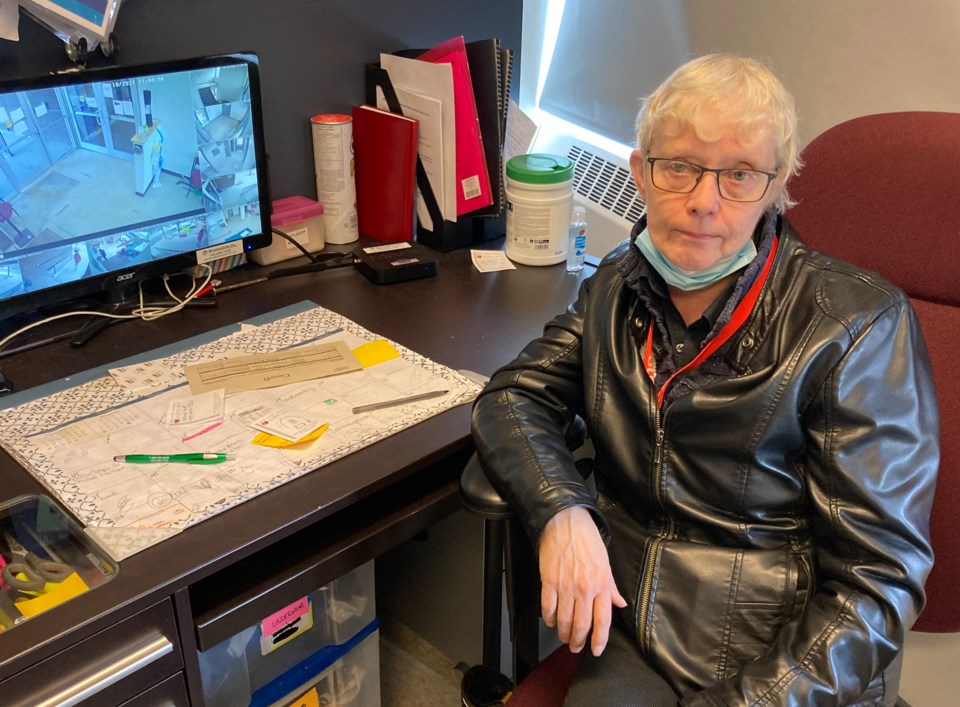The city has seen a 100 per cent increase in homelessness, says Anne Penney, executive director at Pauline’s Place where the facility is full.
Penney’s dream of a long-term solution involves more than providing a roof over someone’s head. It looks at building community and a sense of belonging.
“Because of COVID we are supposed to have 12 here. We do have an overflow across the hall. Now we are at 19,” she said of the current situation.
People arrive daily looking for a spot. Penney said families seeking shelter are becoming more common.
Penney said shelters are no places for kids and workers try to set people up in other accommodations such as grandparents, brothers or sisters.
This trend in homeless families is caused by factors beyond mental health and addictions.
“There’s been a big turnover in real estate,” said Penney. “When people buy houses, they got to leave. We had one woman who had lived in her house for 17 years.”
She said a new term has been coined called ‘renoviction’ where people are evicted because the home they were living in was sold and the new owner is renovating.
“We never had so many people. We used to be able to find a sister or brother, but that’s not even happening any more.”
Opening up a place like the Verdi helps, but the homeless situation is getting out of hand, said Penney.
She wants to impress upon the community that “this is a big deal” and we need to approach the crisis with compassion.
“You hear the negative stuff,” said Penney. “I don’t see the negative stuff here. What I see when people come in here is they are asking for help. They want to get into treatment and they wait and wait. I feel their frustration.”
In Penney’s mind, the people she deals with are all survivors.
“I wouldn’t be able to do half of what they are doing,” she said. “I wish people could come here and see the people, the person. They are artists, photographers, and amazing musicians. They (the public) don’t see that part. They see the person on the street and that’s it.”
Penney sees tiny homes as being part of the solution.
SooToday recently looked at Kingston’s tiny home efforts.
These small homes, built in a specific location would provide shelter, but also a sense of community and accomplishment, especially if the people living in the homes added their sweat equity to the project.
“They will live all together, instead of all over the city all by themselves. Some have a hard time with that," she said.
In fact, what inspired Penney’s tiny house vision was a young 23-year-old woman who had been in and out of the shelter. The woman told Penney that the streets were scarier and the drugs were scarier. After a stay at the detox centre she found herself back in the same situation she had been trying to escape.
“You can tell she had given up,” said Penney. “Three days later she was dead. She couldn’t make it in an apartment. She needed that structure, she needed the people, she needed community.”
She said you can get somebody an apartment, but they still have to cope with being alone. They need to feel part of the community, not ousted by the community, said Penney.
Those who have died on the streets are heroes to Penney because she says they have started something.
Something the community has to finish.
“Come here. Volunteer here. Be part of the solution. Help me build tiny homes,” said Penny.
